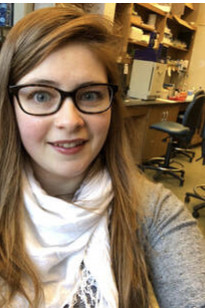

Dr. Adikes began her research and mentoring career working in the Quintero Lab at Mount Holyoke College where she recieved a B.A. in Biochemistry. After graduation she spent a year working in the Vernos Lab at the Center for Genomic Regualtion in Barcelona, Spain. Dr. A obtained her PhD from UNC Chapel Hill where she studied the dynamics of the microtubule cytoskeleton and was a Postdoctoral Fellow at Stony Brook University studying cell cycle regulation during development. She joined Siena College in the Fall of 2021 and is a Leading Edge New Faculty Fellow. Dr. A is interested in understanding the regulation of cytoskeletal dynamics, from the atomic to organismal level.
| Degree | Program | University |
|---|---|---|
| Ph.D. | Molecular, Cellular & Developmental Biology | University of North Carolina at Chapel Hill |
| B.A. | Biochemistry | Mount Holyoke College |
My Siena Experience
My Teaching Philosophy
I encourage students to invest in their learning through active engagement with materials. I bring primary research and the stories of scientific discovery into the classroom with the goal of showing students who has contributed to the body of knowledge within the pages of our textbooks. I support my students as they become effective problem solvers through experimental design, analysis and interpretation of scientific data. I work to foster an inquisitive and inclusive envrionement through group work and class discussions.
My Favorite Courses to Teach
I currently teach Cell Biology, General Biology II and Scientific Research and Writing. I am interested in understanding scientific problems and phenoma from the atomic to organismal level, so I enjoy teaching this combination of courses.
My Professional Experience
| Year | Title | Organization |
|---|---|---|
| 2021 - Now | Assistant Professor | Siena College |
| 2018 - 2021 | Postdoctoral Fellow | Stony Brook University |
| 2011 - 2012 | Fulbright Research Fellow | Center for Genomic Regulation |
Current Research
Reseach in the Adikes lab focuses on understanding how the actin cytoskeleton regulates cell migration and adhesion in an in vivo context. We use a migratory cell lineage in the roundworm, C. elegans, to understand how cells rearrange internal building blocks, such as actin, in response to signals and the local environment to afford cell movement.